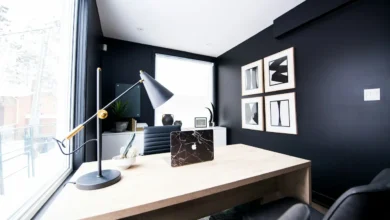Up-and-Coming Melbourne Suburbs for Your Next Business Venture
Beyond the CBD: 7 Up-and-Coming Melbourne Suburbs for Your Next Business Venture
While Melbourne’s CBD still holds its magnetic pull for entrepreneurs, the city’s outer rings are quietly having their own business moments. Smart money’s starting to drift away from the traditional hotspots, seeking fresh ground in suburbs where innovation meets opportunity—and significantly lower rent.
1. Abbotsford
With office spaces for lease in Abbotsford becoming increasingly sought-after, this former industrial pocket has evolved into a thriving business ecosystem. The suburb’s historic warehouses and factories now house everything from tech startups to creative agencies, while maintaining their distinctive architectural character.
Its position between the Yarra River and Victoria Street creates a unique blend of natural beauty and urban grit that attracts both established companies and eager newcomers. The suburb’s proximity to Richmond and Collingwood adds to its appeal, offering the connectivity of these bustling areas without their premium price tags.
2. Preston
Preston’s wide streets and abundant commercial spaces are drawing businesses priced out of Northcote and Brunswick. The Preston Market precinct redevelopment is injecting fresh energy into the area, while the upcoming suburban rail loop will connect it directly to Melbourne’s eastern suburbs. Manufacturing spaces are being repurposed into everything from vertical farms to artisanal food production facilities.
3. Reservoir
Just north of Preston, Reservoir offers something increasingly rare in Melbourne: space to grow. Its industrial zones are ripe for transformation, and the local council’s business-friendly policies make setting up shop here surprisingly straightforward. The suburb’s diverse demographic supports both traditional retail and innovative service businesses, and the rent won’t make you shiver.
4. Sunshine
The Victorian government’s investment in Sunshine as Melbourne’s “second CBD” isn’t just political talk. Major infrastructure projects are underway, including the airport rail link that will position Sunshine as a gateway to Melbourne’s west. Early movers are already securing prime locations for businesses that will serve the expected influx of workers and residents.
5. Clayton
Home to Monash University’s main campus, Clayton combines a steady stream of international students with proximity to major research facilities. The suburb’s growing reputation as a technology and innovation precinct makes it ideal for businesses in the education, healthcare, and technology sectors. The student population ensures a ready market for everything from late-night eateries to educational support services.
6. Moorabbin
Once known mainly for its industrial parks, Moorabbin is developing a new identity as a hub for creative and digital businesses. The suburb’s excellent transport links and relatively affordable commercial spaces are attracting companies that need room to expand but want to stay within reach of Brighton and Bayside’s wealthy customer base. The CSIRO’s nearby presence adds a touch of tech credibility to the area.
7. Coburg
While Brunswick gets all the hipster glory, its northern neighbour Coburg offers similar demographics with more reasonable overheads. The suburb’s mix of Middle Eastern culture and Melbourne modernism creates unique opportunities for fusion businesses. The Sydney Road spine continues to evolve, with vintage shops and traditional delis making way for co-working spaces and boutique gyms.
Smart money watches where artists and creators go—they’re often the first sign of a suburb’s upcoming transformation. Each of these areas shows distinct markers of change: new cafés appearing in unexpected corners, old factories finding new life as creative spaces, and most tellingly, increasing numbers of people walking dogs while carrying keep-cups.
These suburbs represent Melbourne’s next wave of business opportunities. Their mix of affordable space, improving infrastructure, and changing demographics creates fertile ground for entrepreneurs willing to look beyond the usual suspects. The city’s growth patterns suggest these areas won’t stay under the radar for long. The smartest move? Getting in while commercial rents still make sense.




